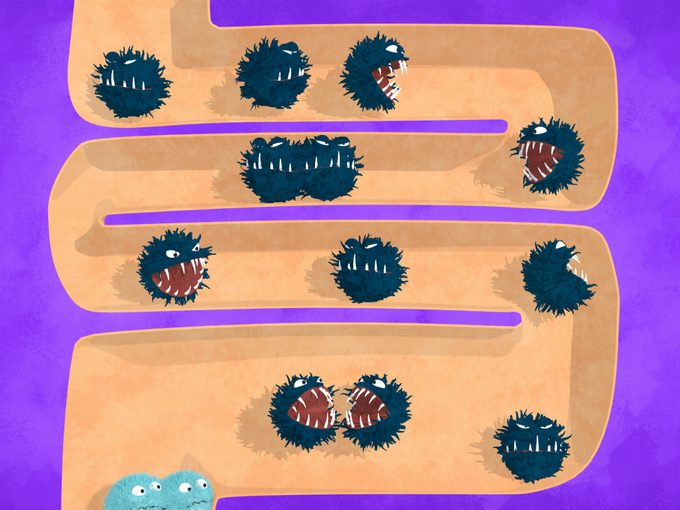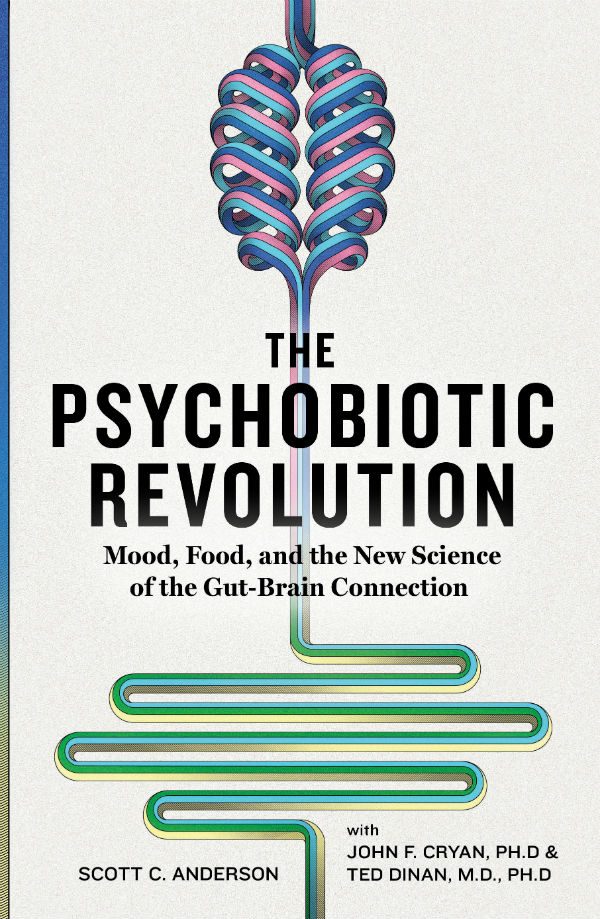Blame The Bacteria In Your Gut For Your Junk Food Cravings
Ever wonder why you can’t get a handle on your cravings? Or maybe why the weight won’t drop? It might be the bacteria in your gut that at fault.

Ever wonder why you crave junk food? It might be the bacteria in your gut
Bacteria can talk to you. The intricacies of this conversation make the Internet look quaint. There are 4 billion Internet users, but you have 10 trillion bacteria in your gut alone that are all sending messages to each other — and to you. Your gut can talk to your brain using several biological networks, but we don’t always get a clear channel.
Your brain can talk back to your gut through these same channels. Only a 10th of your nerves are dedicated to this back channel, but it represents an important additional technique (along with psychobiotics) to help you gain control over the microbes in your gut.
Eat your way to a healthy gut microbiome.
Studies have shown that cognitive behavioral therapy (CBT) can help people suffering from IBS. Research is under way to determine what the mechanism is behind this intriguing brain-gut connection.
It is exciting to think that we could solve our gut issues with talk therapy, thereby improving our gut, reducing inflammation, and resulting in even greater improvements in mental health– a virtuous cycle. A vicious cycle can also be established: Stress can negatively impact your gut microbiota, which in turn can make you more anxious. As well as stress, brain damage can also disturb your microbiota, which can affect your recovery from stroke and injury.
Techniques for “talking back” to your microbiota are the crux of our story.
You can change the composition of your gut overnight, just by eating different foods. This is a natural consequence of the extreme plasticity of your microbiota, which can reorganize itself in minutes to deal with novel foods. In the coming chapters, you will discover more about your intimate relationship with your microbiota, and more importantly, how you can control that association to mitigate depression and anxiety.
Gut microbes produce all manner of chemicals to talk with each other and to your gut; that information is relayed to your brain primarily via the vagus nerve, which is a long wandering nerve from the brain to all your bodily organs. The problem with this communication is that it has very few words. It’s mostly “okay, okay, okay, hungry, hungry, full, okay, okay . . .”
Ever feel hungry, even though you just ate? This is exactly why!
You are designed so that many of your systems—like your heart, lungs, and gut—are on autopilot. You only know what’s going on down there when you have a major problem. But you can tune in to the subtler signals coming from your gut. Your microbiota has needs and over your lifetime has learned how to tell you about them.
When you wake up craving a doughnut, where do you think that idea came from? Your cravings are often just committee memos sent up from your gut microbes. They contain a complete list of the carbs, sugars, and fats they are looking for.
Here’s an example of how that works.
Some microbes, especially our friendly Bifidobacteria species (Bifido), produce butyrate, which feeds and heals the lining of your gut. Butyrate can make its way to the brain, where it can induce a good mood, dampen inflammation, or encouragethe production of a brain-growthhormone.15 All these changes can improve your mood and even help you to think better.
You thrive on the fibre in your diet. If you feed them fibre and find your mood improving, over time you will start to yearn for the fibre that makes you feel good. That is a simple Pavlovian way to create a craving. You are conditioned you to feed it. It’s not just butyrate. Some bacteria, like Lacto species, go even further. In studies with people suffering from IBS, it was found that some Lacto species actually manipulate the opioid and cannabinoid receptors in the brain, acting almost like a shot of morphine.
Getting more fibre in your diet is a snap – if you eat these foods.
Like the addiction to a runner’s high, this kind of reaction can lead to cravings for whatever food your Lacto microbes prefer. You might think your cravings are all in your mind, but chances are they begin withthe bacteria in your gut.
Germ-free mice like sugar more than conventional mice, and their taste receptors are altered to crave it. Sugar is an exceptional energy source, but conventional mice have a diverse microbiota that requires other important food sources that compete with sugar, like fat and protein. In this light, sugar cravings can be seen as a consequence of a dysbiotic gut.
That is likely related to the sugar cravings of people in mental hospitals. Sugar cravings have also been seen in people who are stressed. This could be an attempt by the body to load up on energy-dense foods that can quickly be converted to muscle action, a typical stress response.
Cravings undergo a major change in people who have gotten a stomach bypass to lose weight. They have a completely different microbiota and brand-new cravings.
In fact, much of the weight loss attributed to a smaller stomach is actually due to other factors, including changing tastes. Studies are starting to indicate that much of that may be due to the altered microbiota.
Each type of bacteria has its own food preferences. Bacteroidetes have a thing for fat, Prevotella enjoy carbs, and Bifido are fibre lovers. They each have their own way of asking for an appropriate meal, and they also have ways of thanking you.
Some bacteria don’t go for subtlety. Many species of E. coli are model citizens in the gut, but others are strictly pathogenic, such as enterohemorrhagic E. coli (EHEC). As long as enough sugar is around to placate it, EHEC will play well with your other gut buddies.
But if the sugar runs out, EHEC turns rogue and digs in to your gut lining, potentially causing bloody diarrhea. That’s a terrible way to ring the dinner bell, but it gets your attention. If you have EHEC, candy actually acts like a medicine.
This kind of behavior is called bacterial virulence.
Shigella flexneri is another microbe that complains about a lack of sugar by becoming virulent. These are pathogens, but the same principles seem to apply to commensal bacteria as well. If they don’t get what they want, they can make a fuss.
When that happens, you may not know it directly, but they have ways of making you uncomfortable until you give them what they want. It’s that funky feeling that makes you suddenly crave a candy bar or other snack. You may not know why, but you know there is a bonbon-size hole in your gut, and it quickly becomes your job to fill it.
Everything you know about probiotics might be wrong!
For such tiny, simple creatures, bacteria have an astonishing array of tricks. If your gut is healthy, there will be a cosmopolitan bustle of microbes with no one species dominating. That means that no one species can exert too much control. A dysbiotic gut, on the other hand, has less diversity. A few domineering microbes can rule the land, calling out orders for specific foods on a regular basis. You may be able to override these cravings with your superior willpower, but your microbes won’t go down without a fight.
Our cravings seem like an integral part of our psyche.
We are chocolate lovers, we are pizza people, we are meat and potato eaters. As long as we feel it’s part of our personality, we are unlikely to make any changes. That’s just who we are. But when you think of your cravings as microbial longings, it may be easier for you to take back control.

This is excerpted from The Psychobiotic Revolution: Mood, Food, and the New Science of the Gut-Brain Connection (Penguin, 2017) by Scott C. Anderson, John F. Cryan and Ted Dinan.




